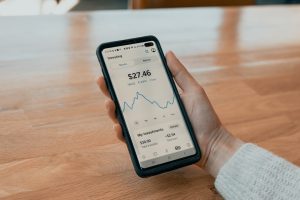Forex is the largest financial market in the world, with a daily trading volume of over $5 trillion. As with any market, forex traders use indicators to help them analyse market movements and make informed trading decisions. But what indicators work on forex? In this article, we will explore the most commonly used indicators in forex trading and how they can be used to predict market trends.
Moving Averages
Moving averages are one of the most popular indicators in forex trading. They are used to smooth out price fluctuations and help traders identify the direction of the trend. A moving average is calculated by adding up a certain number of prices and then dividing the total by the number of prices. The resulting average is plotted on the chart as a line that moves up and down as new prices are added.
There are different types of moving averages, including simple moving averages (SMA) and exponential moving averages (EMA). SMAs give equal weight to each price, while EMAs give more weight to recent prices. Traders use moving averages to identify support and resistance levels and to determine when to enter or exit a trade.
Bollinger Bands
Bollinger Bands are another popular indicator in forex trading. They consist of three lines – a simple moving average in the middle and two outer bands that are two standard deviations away from the moving average. The outer bands expand and contract based on the volatility of the market.
Traders use Bollinger Bands to identify overbought and oversold conditions. When the price moves outside the outer bands, it is considered overbought or oversold and a reversal may be imminent. However, it is important to note that price can remain outside the bands for an extended period, so traders should use other indicators to confirm a reversal.
Relative Strength Index (RSI)
The Relative Strength Index (RSI) is a momentum indicator that measures the strength of a trend. It ranges from 0 to 100 and is calculated by comparing the average gains and losses over a certain period. When the RSI is above 70, it is considered overbought and when it is below 30, it is considered oversold.
Traders use the RSI to identify potential reversal points. When the RSI is overbought or oversold, it may indicate that the trend is about to reverse. However, traders should use other indicators to confirm a reversal before entering a trade.
Fibonacci Retracement
Fibonacci retracement is a technical analysis tool that uses horizontal lines to indicate areas of support or resistance. The lines are drawn based on the Fibonacci sequence, a series of numbers where each number is the sum of the two preceding numbers.
Traders use Fibonacci retracement to identify potential entry and exit points. When the price retraces to a Fibonacci level, it may indicate that the trend is about to continue. However, traders should use other indicators to confirm a trend before entering a trade.
Conclusion
In conclusion, there are many indicators that work on forex. Moving averages, Bollinger Bands, RSI, and Fibonacci retracement are just a few of the most commonly used indicators. Traders should use a combination of indicators to confirm trends and identify potential entry and exit points. It is important to note that no indicator is perfect and traders should always use risk management strategies to protect their capital.






